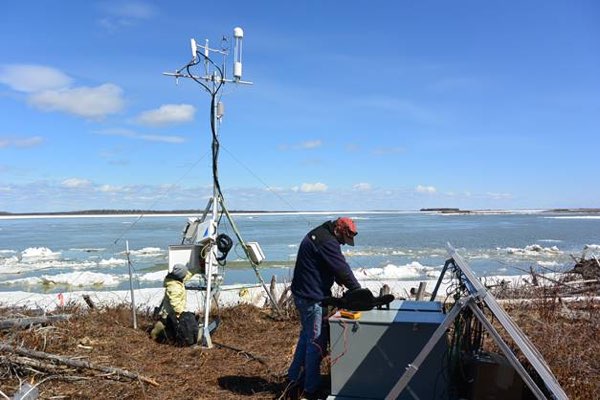Manitoba Hydro taking the lead on reservoir emissions research
By displacing energy with higher carbon emissions, Manitoba hydropower can reduce the amount of greenhouse gases (GHGs) entering our atmosphere, helping mitigate climate change. That’s something we’re proud of.
Hydropower generation is an extremely low-carbon energy source. While some emissions inevitably result from construction, maintenance and day-to-day operation of the utility and its facilities, Manitoba’s abundant and powerful rivers allow us to provide our customers with ample clean, dispatchable, and renewable electricity that is virtually free of GHGs.
Despite that fact, myths regarding carbon emissions from hydroelectric reservoirs continue to circulate among many organizations. These myths include a belief that reservoirs emit just as many GHGs as fossil fuel plants early in their life cycle, making our large hydro projects no better than fossil fueled plants as an energy source.
That is simply not true.
What is true is that Manitoba Hydro uses reservoirs as a mechanism to allow us to store energy and dispatch it as needed to our customers in Manitoba and the rest of the MISO footprint.
Though Manitoba Hydro’s system is primarily based on “run-of-river”, which means our reservoirs are relatively small, we can still operate them as a pseudo-battery. This gives us the ability to manipulate water levels by small amounts which — when performed across our entire system — allows us to run our generators to respond in minutes to fluctuations in demand of almost 3,000 MW, with minimal impact to waterways across Manitoba.
It is also true that even with the small size of most of our hydropower reservoirs, their creation can accelerate natural processes of peat soil decomposition. This kind of soil contains accumulated organic carbon, and the decomposition of that soil releases some carbon into the atmosphere via the reservoir. These are factors we take into account prior to construction when we estimate the potential GHG emissions, and develop our environmental protection plans, during the licensing phase of our projects.
Though it too is primarily run-of-river and will rely on the latent power of the roaring Nelson River in northern Manitoba, the under-construction Keeyask Generating Station’s relatively small reservoir will initially release some carbon resulting from a marginally accelerated decomposition of soils. But compared to almost all other forms of energy at Keeyask’s scale (695 megawatts of capacity), the station’s carbon emissions – both initially and over the asset’s life cycle – are going to be low. Very low.
To put Keeyask’s GHG emissions into perspective: it’s estimated that the project will produce fewer GHGs over its entire 100-plus years of life than an identically sized, combined cycle natural gas facility would produce in less than a year.
Learn more: Greenhouse Gas Emissions and Manitoba’s Hydropower infosheet (PDF, 123 KB).
Not all generating stations have the geological factors that Keeyask has. This gives us an opportunity to study the environmental effects to help guide future hydropower development in similar areas. As an example, the Keeyask site is notable among Canadian hydropower reservoirs due to its soil conditions: water impounded for the reservoir will cover predominately peat soils underlain by permafrost.
As with all hydropower projects constructed in Canada’s modern regulatory environment, Manitoba Hydro is responsible for keeping track of and addressing its environmental impact. At Keeyask, this includes working rigorously with our partners to track many different parameters related to GHG emissions before impoundment of the forebay and reservoir, and continuing to monitor those parameters into the future. Using that data, we can then develop a site-specific model to explain and predict emissions and carbon cycling over the long-term at the Keeyask reservoir. This information will aid future hydropower projects being built with a low-carbon future in mind.
The research on Keeyask’s reservoir is cutting edge. The different hydrology, geology and other factors surrounding the site mean we need to conduct new surveys and other research to determine the project’s effects on its immediate surroundings and the larger environment in Manitoba. Learn more about our research.
Early data is promising. Manitoba Hydro will continue to prioritize our environmental stewardship, and one thing is for sure: for decades in the future, our carbon footprint – already much, much smaller than the average North American utility – will keep Manitoba hydropower one of the cleanest, most reliable sources of low-carbon electricity on the continent.

